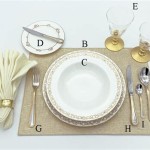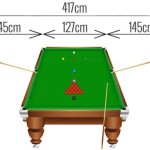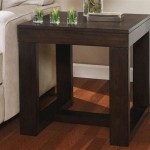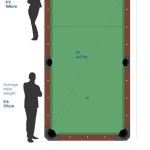Dining Room Table Sizes: A Comprehensive Guide in Metric Units
Choosing the right dining room table is a crucial decision that impacts both the aesthetic appeal and the functionality of a dining space. A properly sized table ensures comfortable seating, adequate space for serving dishes, and ease of movement around the room. While sizing can often be discussed in imperial units, understanding dining table sizes in metric units provides a standardized and internationally recognized approach. This article provides a comprehensive overview of dining room table dimensions in metric measurements, assisting in making informed decisions for various dining space sizes and seating requirements.
The initial consideration when selecting a dining table is the available space within the dining room. Overcrowding can make a room feel cramped and uncomfortable, while a table that is too small can appear lost and disproportionate. Careful measurement of the room is essential before considering table sizes. This includes measuring the length and width of the room, noting the placement of doorways, windows, and any architectural features that might obstruct movement or table placement. A good rule of thumb is to allow a minimum of 90 centimeters (cm) of clearance space between the edge of the table and any walls or other furniture. This allows individuals to comfortably pull out chairs and move around the table without feeling constricted.
Beyond room size, the number of people typically seated at the table is a primary factor. Tables are generally sized to accommodate a specific number of diners, and understanding these standard sizes is key to selecting the appropriate table. Furthermore, the shape of the table – rectangular, square, round, or oval – also influences the number of people it can comfortably seat. Each shape optimizes space differently and offers distinct aesthetic qualities. These factors all influence the ideal dining room table sizes in metric units.
Key Point 1: Standard Dining Table Sizes by Shape and Seating Capacity (Metric)
Understanding standard dining table sizes in metric units allows for precise planning and selection. Each shape offers a unique layout and seating capacity. Here's a breakdown of common table shapes and their corresponding dimensions:
Rectangular Tables: Rectangular tables are the most common choice for dining rooms, offering a versatile and efficient use of space. They are particularly well-suited for longer, narrower rooms.
- 4-Person Rectangular Table: A standard 4-person rectangular table typically measures around 120 cm to 150 cm in length and 75 cm to 90 cm in width. This provides sufficient space for each diner and allows for a comfortable dining experience.
- 6-Person Rectangular Table: For seating six people, a rectangular table usually measures between 180 cm and 230 cm in length and 90 cm to 100 cm in width. This offers ample space for each person and allows for serving dishes in the center.
- 8-Person Rectangular Table: An 8-person rectangular table typically stretches to approximately 240 cm to 300 cm in length and maintains a width of 90 cm to 100 cm. Ensuring that the width doesn't become excessive is crucial, as it can make passing dishes difficult.
- 10-Person Rectangular Table: Large dining rooms often accommodate 10-person rectangular tables, which measure in at around 300 cm to 365 cm long and 100 cm to 120 cm wide. These tables are generally meant for more formal settings or large family gatherings.
Square Tables: Square tables are ideally suited for square rooms and smaller spaces where symmetry is desired. They promote equal conversation among diners.
- 4-Person Square Table: A 4-person square table typically measures around 90 cm to 120 cm per side. This provides a compact and intimate dining arrangement.
Round Tables: Round tables are perfect for creating a sense of intimacy and encouraging conversation among all diners. They are often used in smaller dining rooms or breakfast nooks.
- 4-Person Round Table: A 4-person round table usually has a diameter of 90 cm to 120 cm. This allows for comfortable seating and easy reach to the center of the table.
- 6-Person Round Table: For seating six people, a round table requires a diameter of approximately 135 cm to 150 cm. This provides sufficient space for each diner without feeling too crowded.
- 8-Person Round Table: An 8-person round table typically has a diameter of 150 cm to 180 cm. It is essential to ensure that the table is not too large, as it can make reaching dishes in the center difficult.
Oval Tables: Oval tables offer the advantages of both rectangular and round tables, providing a visually appealing shape and efficient use of space. They are well-suited for both rectangular and oval-shaped rooms.
- 6-Person Oval Table: A 6-person oval table typically measures around 180 cm to 230 cm in length and 90 cm to 100 cm in width.
- 8-Person Oval Table: An 8-person oval table is about 240 cm to 300 cm in length and maintains a width of 90 cm to 100 cm.
These measurements are general guidelines, and slight variations may occur depending on the specific design and style of the table. It is always recommended to consult the manufacturer's specifications for accurate dimensions.
Key Point 2: Calculating Space Requirements: Room Size and Clearance
As previously mentioned, calculating the available space in the dining room is essential before selecting a dining table. This involves measuring the room's length and width and factoring in the necessary clearance space around the table. The rule of thumb is to allow for at least 90 cm of clearance between the edge of the table and any walls or other furniture. This is the bare minimum to allow movement. A more generous allowance, such as 105 cm to 120 cm, provides more comfortable space for people to move around, especially in high-traffic areas.
The following steps outline the process of calculating space requirements:
- Measure the Length and Width of the Room: Use a measuring tape to accurately measure the length and width of the dining room in centimeters.
- Determine the Desired Clearance Space: Decide on the desired clearance space around the table. 90 cm is the minimum, while 105 cm to 120 cm is preferred for greater comfort.
- Subtract Clearance Space from Room Dimensions: Subtract the total clearance space (clearance on both sides of the table) from both the length and width of the room. For example, if the room is 400 cm long and 300 cm wide, and the desired clearance is 90 cm, subtract 180 cm (90 cm x 2) from both dimensions. This leaves a usable length of 220 cm and a usable width of 120 cm.
- Choose a Table Size that Fits Within the Usable Space: Select a dining table that does not exceed the calculated usable length and width. Remember to account for chair width when the chairs are pulled out from the table.
The shape of the table also affects space requirements. Round tables, for example, require a larger open area to accommodate their circular shape. Similarly, rectangular tables may require more careful consideration in narrow rooms to ensure adequate walking space. It is also important to consider the placement of any existing furniture in the room, such as sideboards, buffets, or cabinets, and factor in their dimensions when calculating space requirements.
Using online room planning tools or creating a scaled floor plan can be helpful in visualizing the placement of the dining table and ensuring that it fits comfortably within the available space. These tools allow for experimenting with different table sizes and shapes to determine the optimal configuration for the dining room.
Key Point 3: Considerations Beyond Size: Table Height and Material
While the length, width, and shape of a dining table are primary considerations, other factors contribute to the overall comfort and functionality of the dining experience. These include the table's height and the material from which it is constructed.
Table Height: The standard height for a dining table is typically between 75 cm and 80 cm. This height is designed to accommodate comfortable seating and allow for proper legroom. Most dining chairs are designed to work with tables in this height range. However, it is crucial to consider the height of the dining chairs when selecting a table. Ideally, there should be a distance of approximately 25 cm to 30 cm between the top of the chair seat and the underside of the table. This allows for comfortable legroom and prevents knees from bumping against the table.
Tables outside this range can still be viable depending on chair pairing and whether they are intended for dining vs. casual use (e.g., a bar-height breakfast table). Always verify table and chair compatibility prior to purchasing.
Table Material: The choice of table material affects not only the aesthetic appeal of the dining room but also the durability and maintenance requirements of the table. Common materials for dining tables include wood, glass, metal, and stone. Each material has its own advantages and disadvantages.
- Wood: Wood tables are a classic choice, offering warmth, beauty, and durability. They are available in a wide range of wood species, each with its own unique grain pattern and color. Hardwoods such as oak, maple, and cherry are popular choices for dining tables due to their strength and resistance to scratches and dents. Wood tables require regular cleaning and polishing to maintain their appearance and prevent damage from moisture or spills.
- Glass: Glass tables offer a modern and elegant look. They are easy to clean and can make a small dining room feel more spacious due to their transparency. However, glass tables can be prone to scratches and fingerprints and may require more frequent cleaning. Tempered glass is the preferred choice for dining tables due to its strength and safety.
- Metal: Metal tables are durable and stylish, offering a contemporary look. They are often used in industrial or minimalist settings. Metal tables are resistant to scratches and stains but can be cold to the touch. They may also require periodic cleaning to remove fingerprints and smudges.
- Stone: Stone tables, such as marble or granite, offer a luxurious and sophisticated look. They are highly durable and resistant to heat and scratches. However, stone tables can be heavy and expensive and may require professional installation. They also need to be sealed regularly to prevent staining.
The choice of table material should be based on personal preference, the overall style of the dining room, and the desired level of maintenance.
Ultimately, selecting the right dining room table size in metric units requires careful consideration of the room's dimensions, the number of people to be seated, and personal preferences regarding shape, height, and material. By understanding these factors and utilizing the guidelines provided, it is possible to choose a dining table that enhances the functionality and aesthetic appeal of the dining space.

Choose The Right Dining Table West Elm

A Guide To Choosing The Ideal Dining Table Width

Useful Dining Room Size Guide In 5 Easy Steps Urvission Interiors

Metric Data 08 Standard Furniture Sizes Dining Table Living Room Layout

How To Choose The Size Of A Table

Dining Room Size

Italian Dining Tables How Many Can I Seat Italy By Web

Table Size Advisor Which Is Right For Me

Oval Table Sizes Dimensions Drawings Com Dining Room
What Is A Suggested 6 Seater Dining Table For Your Home Quora








